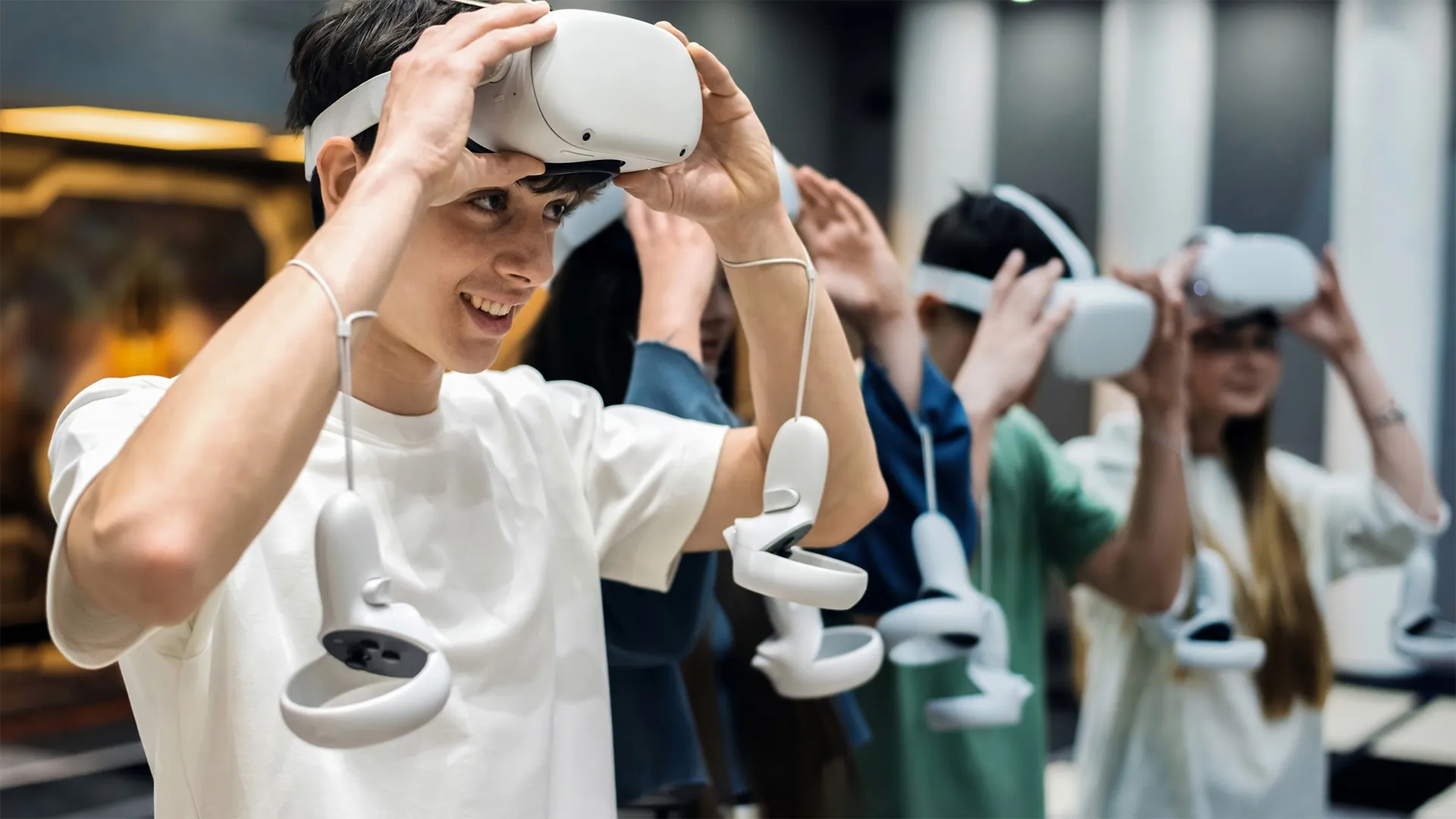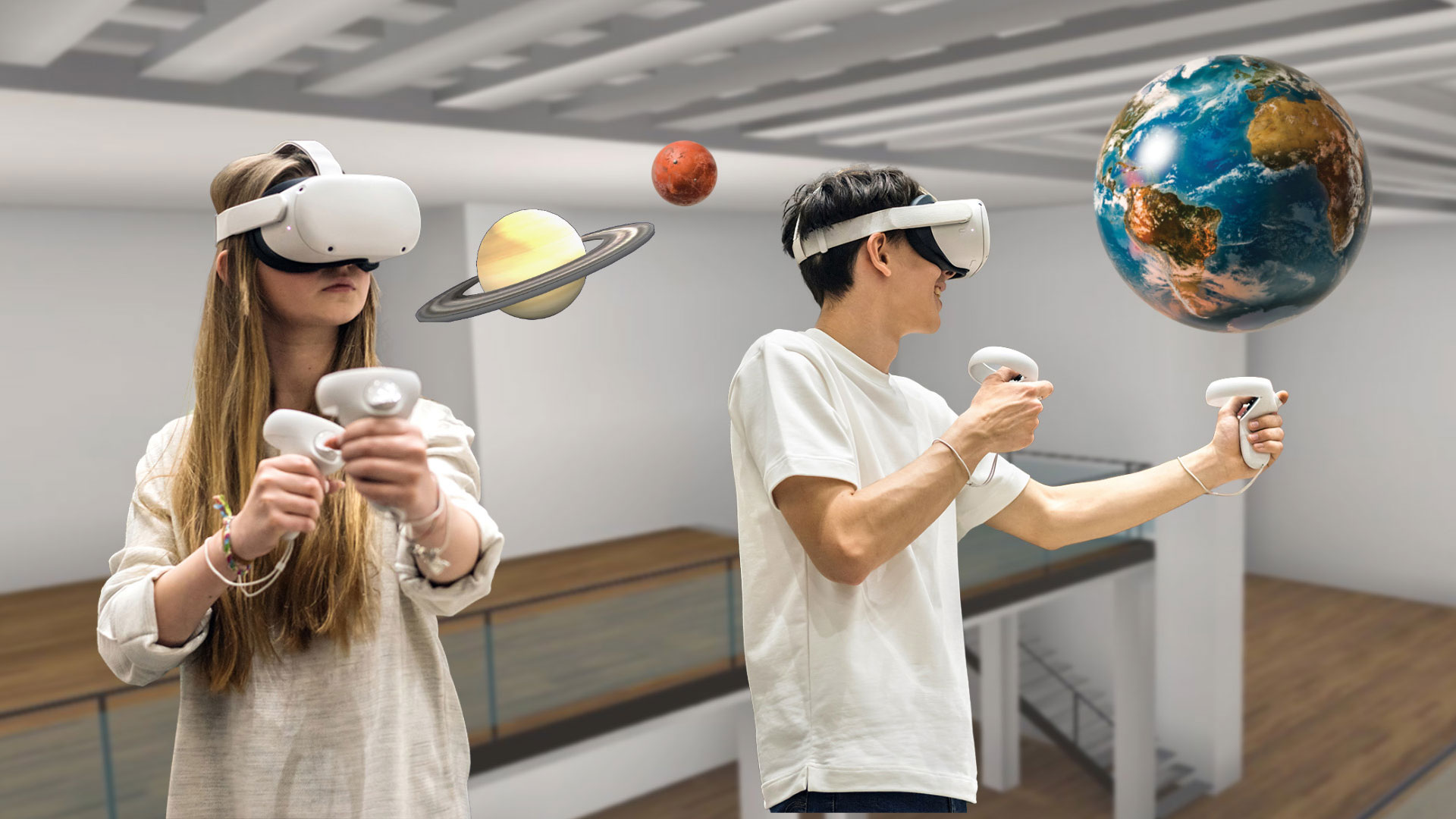
While students today are commonly referred to as ‘digital natives,’ it’s important to remember that consuming media is not the same thing as utilizing it. All too often, students are disproportionately asked to consume versus create, which is why it’s time to consider new technologies that help students from passive consumers to confident creators. There's a stark difference between students passively watching things and creating something uniquely their own. Virtual Reality (VR) can make crossing that line easier for school districts, turning "Why do I have to watch this?” into “Look what I can do with this!”
VR education is not another shiny new EdTech resource. It's a powerful medium that maintains students' interest and encourages them to show up in class and actively engage in learning. Districts have begun to see first-hand the impact of gamification on student engagement. Students became more invested in their education while having fun. But what happens when students become the ones making the game? For the educators who've already implemented VR in classrooms, they've seen how VR supports students' social skills and collaboration. In a world where screen time is often blamed for deteriorating interpersonal skills, VR promotes communal learning and shared experiences.

Students collaborating and creating in real-time together using Zoe .
Studies have shown that excessive screen time can lead to stress and attention issues, VR is a refreshing alternative because it pulls students out of the passive scroll-and-watch mode and into the role of creators and problem-solvers. VR helps students take ownership of their learning. It flips the traditional ways of absorbing information into sensory-rich experiences that are hard to forget.
Old School Creativity vs. New Tech: What Sticks Around?
Historically, project-based learning was about getting your hands dirty—literally. Remember making those globby papier-mâché globes or the science fair, where half the gym was trying not to set off the fire alarm with baking soda volcanoes? These projects were our first real taste of putting what we learned into action. They were fun and messy and sticky and, most importantly, memorable. They made the concepts we read about in textbooks actually stick in our brains.
Even with the onset of myriad EdTech solutions, what matters in education hasn't changed—getting students excited about learning and making that learning stick. It's not simply having tech that makes a difference, but how it's used. Can it make learning more than just memorizing facts? Can it turn students into detectives eager to explore and figure things out independently? Can it stick?
Hear from High School student Sharni M. how she used Zoe to create an Art portfolio for her college application.
VR takes students to places and situations that were off-limits before, giving them the grit and resilience to problem-solving we've longed to see. Ultimately, what lasts in education isn't the specific tool or gadget. It's whatever makes learning come alive for students, helping them see the world in new ways and encouraging them to keep asking "why?" and "what if?" Whether with clay, cardboard, or captivating VR, the goal is to light the spark of curiosity and keep it burning. That's learning that lasts. That’s learning that sticks.
How VR Technology Changes Classroom Dynamics For The Better
It’s true that some EdTech tools overpromise and underdeliver. How often have districts experienced a gap between those expectations and student outcomes? VR won't change students or classrooms, at least not in the traditional sense. VR education changes the perception of learning. How students perceive educational topics is half the battle. Their perception of educational topics determines their engagement level and, ultimately, their level of mastery. VR makes any passive activity into an active, immersive experience where students are central participants in their education. Here are three student-made VR experiences that demonstrate far more than knowledge.
EpiPen Training: A Virtual Lifesaver
EpiVR - WorkWonder Workshop 2022
West Allis Schools: Where Learning Meets Gaming
Water Cycle Game - West Milwaukee Intermediate
Starbucks VR: Coffee Shop Meets Classroom
What happens when students use and create with VR technology?
Creativity and Collaboration
Fundamental Skills for the Real World
Teacher Justin Kosek speaking at ISTE 2023 about his experience with 6th graders.
Break Free from Passive Learning: Engage and Create with Zoe Immersive VR
Imagine turning education into an experience where students aren't just sitting and listening—they're creating. VR education, particularly Zoe Immersive, gives students the reins to design entire worlds where math isn't just about numbers, it’s calculating range for underwater exploration; history isn’t a series of facts, it’s a first-person exploration of artifacts from fascinating eras; plot isn't confined to the written word, it’s a lived narrative that is visually laid out for all to see and feel. In virtual reality, the learning is real because it is owned by the students. They are not watching the adventure, they are living it. Heck, they are actually creating it.
Zoe Immersive makes VR approachable for educators and students. No coding skills? No problem. Its user-friendly setup means anyone can start building right away. If VR technology makes you nervous, Zoe's user-friendly format will change your mind. It's simple and stress-free to integrate into the curriculum. It keeps things straightforward, letting teachers focus on what's important: helping students learn and create something new.
Are you interested in VR turning students into creators? Let's make it a reality. Schedule a demo with Zoe Immersive and see how seamless and effective VR integration can be. Discover how our platform can re-energize teaching and return learning to an active, engaging process.


